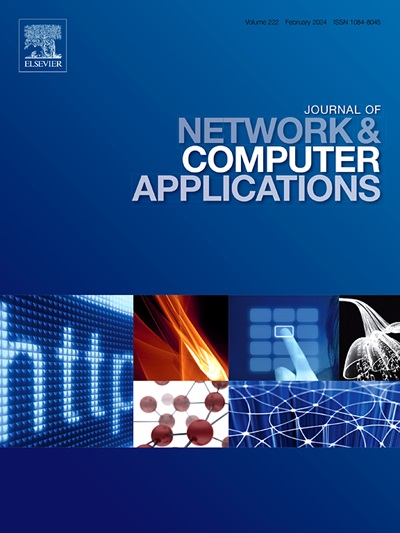从5G到6G过渡中无人机辅助无线通信的全面调查:最先进的交织创新、挑战和机遇
IF 7.7
2区 计算机科学
Q1 COMPUTER SCIENCE, HARDWARE & ARCHITECTURE
引用次数: 0
摘要
由于通信技术的快速发展,无人驾驶飞行器(uav)越来越有能力从空中有利位置提供可靠和经济的无线通信。与传统的固定基础设施不同,无人机具有高可扩展性和改进的视距(LoS)连接等吸引人的特性。因此,无人机辅助无线通信已成为一种有希望的范例,以增强地面和非地面网络的覆盖和连接。然而,在不断发展的无线网络场景中有效部署无人机仍然是一项具有挑战性的任务。这些挑战吸引了大量关于无人机辅助无线通信的研究文献和随后的几篇调查论文。无人机辅助无线网络研究的一个显著特征是其广泛的实验和分析工具和技术。对这些方法进行彻底的回顾可以使研究人员迅速熟悉这一广阔领域的最新成果。然而,该领域的大多数现有综述/调查论文缺乏对无人机辅助无线网络中使用的先进技术的全面讨论,如分频多址(RSMA)、同步无线信息和电力传输(SWIPT)、数字孪生(DT)、认知无线电(CR)、空-空-地集成网络(SAGIN)、无蜂窝大规模多输入多输出(CF mMIMO)、集成传感和通信(ISAC)、量子技术、通信技术、通信技术等。全息MIMO技术。考虑到这一限制,并考虑到采用此类技术可以受益的新型无人机辅助通信场景;这项工作提供了与无人机辅助通信相关的最先进的交织技术的全面分析,以及对其有效性和局限性的讨论。此外,本研究简要概述了无人机辅助网络的综合挑战及其安全挑战,并开辟了该领域的未来方向。这项工作最后探讨了为无人机辅助无线网络开发的每种现有技术中的独特挑战,这些技术在先前的文献中得到了有限的探索,旨在为未来的工作提供一套方向。本文章由计算机程序翻译,如有差异,请以英文原文为准。
A holistic survey of UAV-assisted wireless communications in the transition from 5G to 6G: State-of-the-art intertwined innovations, challenges, and opportunities
Due to the rapid progress in communication technologies, unmanned aerial vehicles (UAVs) have become increasingly capable of providing reliable and cost-effective wireless communication from aerial vantage points. Unlike conventional stationary infrastructure, UAVs exhibit attractive features such as high scalability and improved line-of-sight (LoS) connectivity. Consequently, UAV-assisted wireless communications have become a promising paradigm to enhance coverage and connectivity in terrestrial and non-terrestrial networks. Nevertheless, the efficient deployment of UAVs in continuously evolving wireless network scenarios has remained to be a challenging task. These challenges have attracted a large body of research literature and subsequently several survey papers on UAV-assisted wireless communications. One of the distinctive features of research in UAV-assisted wireless networks is its broad array of experimental and analytical tools and techniques. A thorough review of these methodologies can swiftly familiarize researchers with the most recent efforts within this expansive field. However, most of the existing review/survey papers in this domain lack a comprehensive discussion about the advanced technologies used in UAV-assisted wireless networks, such as rate-splitting multiple access (RSMA), simultaneous wireless information and power transfer (SWIPT), digital twin (DT), cognitive radio (CR), space-air-ground integrated network (SAGIN), cell-free massive multiple-input multiple-output (CF mMIMO), integrated sensing and communication (ISAC), quantum technology, holographic MIMO (HMIMO). Motivated by this limitation and considering the novel UAV-assisted communication scenarios that can benefit from the adoption of such technologies; this work provides a thorough analysis of state-of-the-art intertwined technologies relative to UAV-assisted communications along with a discussion of their effectiveness and limitations. Furthermore, this study provides a brief overview of the comprehensive challenges of UAV-assisted networks, along with their security challenges, and opens future direction in this domain. This work finally explores the unique challenges in each of the existing technologies developed for UAV-assisted wireless networks that have been limitedly explored in prior literature aimed at providing a set of directions for future works.
求助全文
通过发布文献求助,成功后即可免费获取论文全文。
去求助
来源期刊

Journal of Network and Computer Applications
工程技术-计算机:跨学科应用
CiteScore
21.50
自引率
3.40%
发文量
142
审稿时长
37 days
期刊介绍:
The Journal of Network and Computer Applications welcomes research contributions, surveys, and notes in all areas relating to computer networks and applications thereof. Sample topics include new design techniques, interesting or novel applications, components or standards; computer networks with tools such as WWW; emerging standards for internet protocols; Wireless networks; Mobile Computing; emerging computing models such as cloud computing, grid computing; applications of networked systems for remote collaboration and telemedicine, etc. The journal is abstracted and indexed in Scopus, Engineering Index, Web of Science, Science Citation Index Expanded and INSPEC.
 求助内容:
求助内容: 应助结果提醒方式:
应助结果提醒方式:


